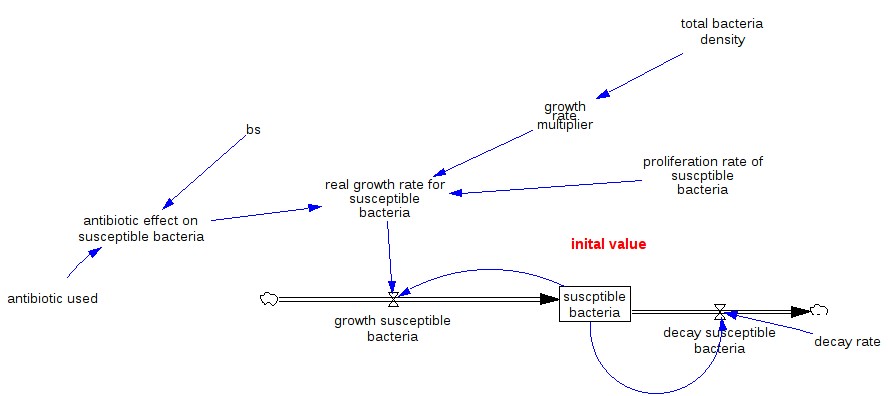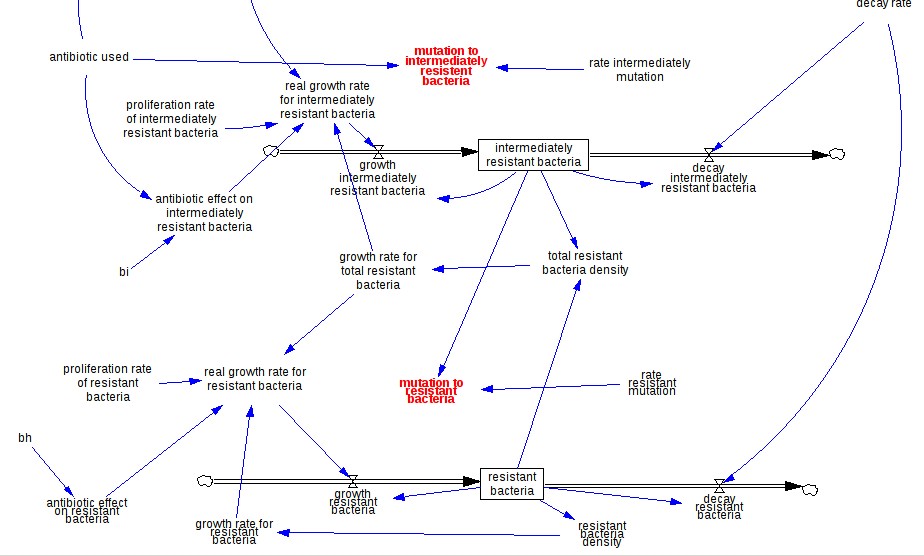We are living through the coronavirus pandemic, but the next pandemic could be caused by a resistant bacteria. Antimicrobial o antibiotic resistance (AMR) is a threat to public health. Fleming discovered penicillin and AMR. AMR is an innate characteristic of bacteria which enables them to survive the effects of medication (especial antibiotics) previously used for the treatment of the disease they caused. AMR is not a new threat, nevertheless, in recent decades AMR has become a huge problem for decision-makers.
To choose the best strategy to assess the AMR problem, the Author has reviewed what has been done in the field of AMR. Several mathematical models have been developed to simulate the AMR evolution. Some of these models simulate AMR by categorizing the human hosts according to the type of bacteria that colonized them. Homer et al. (1) developed a stock-flow model that simulates the evolution of AMR as a bacterial population dynamic. Categorizing bacteria is more useful than human categorization. The human hosts may harbour both susceptible and resistant strains of the same bacterial species. Moreover, bacteria are widespread. Bacteria species can be found within our body or outside it, living freely in the environment or live inside animals or plants. Bacteria can cause diseases when our immune system is not able to protect us from them. In other cases, bacteria live as commensals protecting us from pathogenic bacteria. All bacteria compete among themselves for the niche turf.
So to focus on the bacteria population, the chosen model subdivides the bacteria in three classes. The first is the susceptible bacteria, on which antibiotics act interfering whit their proliferation (figure 1). The other two classes are resistance bacteria (called intermediately and highly resistant respectively) where antibiotics do not interfere with the bacterial proliferation. Using the model, the niche saturation can be simulated so the bacteria growth reproduces what happens in the real life.
By focusing on bacteria, the model describes the causal structure of the AMR. At the same time, antibiotics inhibit the proliferation of the bacteria but if they are inopportunely used we will observe the development of the AMR. So the dilemma known as “the tragedy of the commons” is reproduced (1,2,3).

Figure 1 – The first part of the model. This part simulates the susceptible bacteria growth. A multiplying factor (bs) is used for simulating the antibiotic effects.

Figure 2 – The second part of the model, in which the resistant bacteria growth is simulated. Two multiplying factors (bh and bi) are used to simulate the antibiotic effect on resistance bacteria.
References
1. J Homer, J Ritchie-Dunham, H.Rabbino, LM Puente, J Jorgensen and K Hendrick (2000) Toward a dynamic theory of antibiotic resistance System Dynamics Review Vol. 16, No 4 267:319
2. IN Okeke (2009) The tragedy of antimicrobial resistance: achieving a recognition of necessity Current Science Vol. 97, No. 11 (10 December 2009), pp. 1564-1572
3. J Conly (2010) Antimicrobial resistance: revisiting the “tragedy of the commons” Bull World Health Organ 2010;88:805–806
(*)





